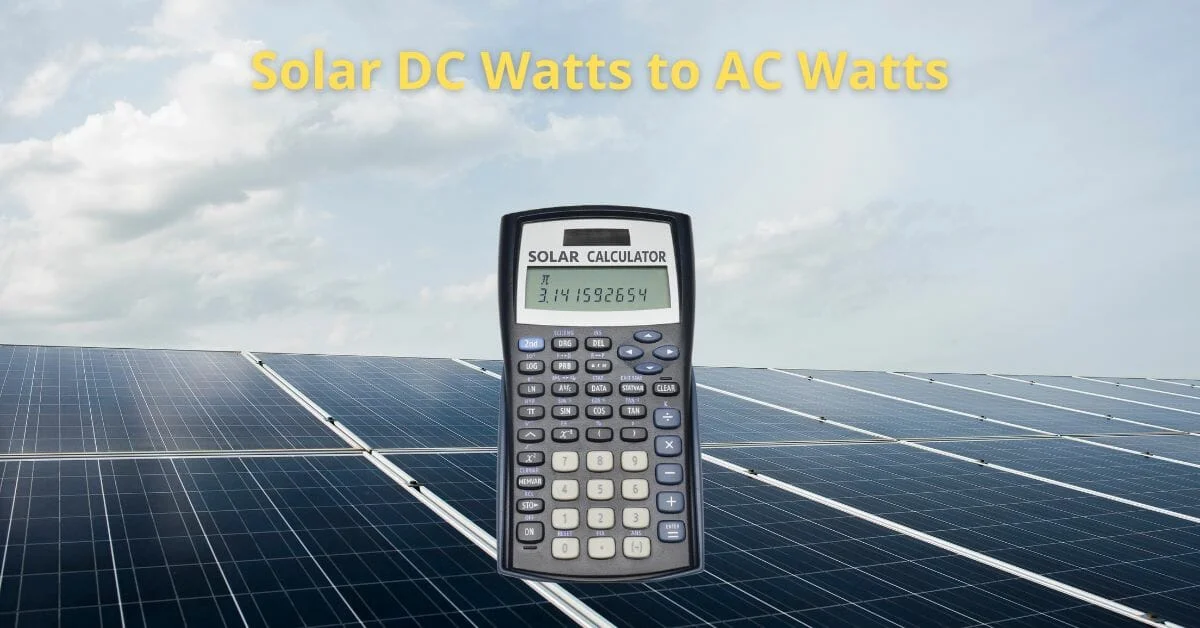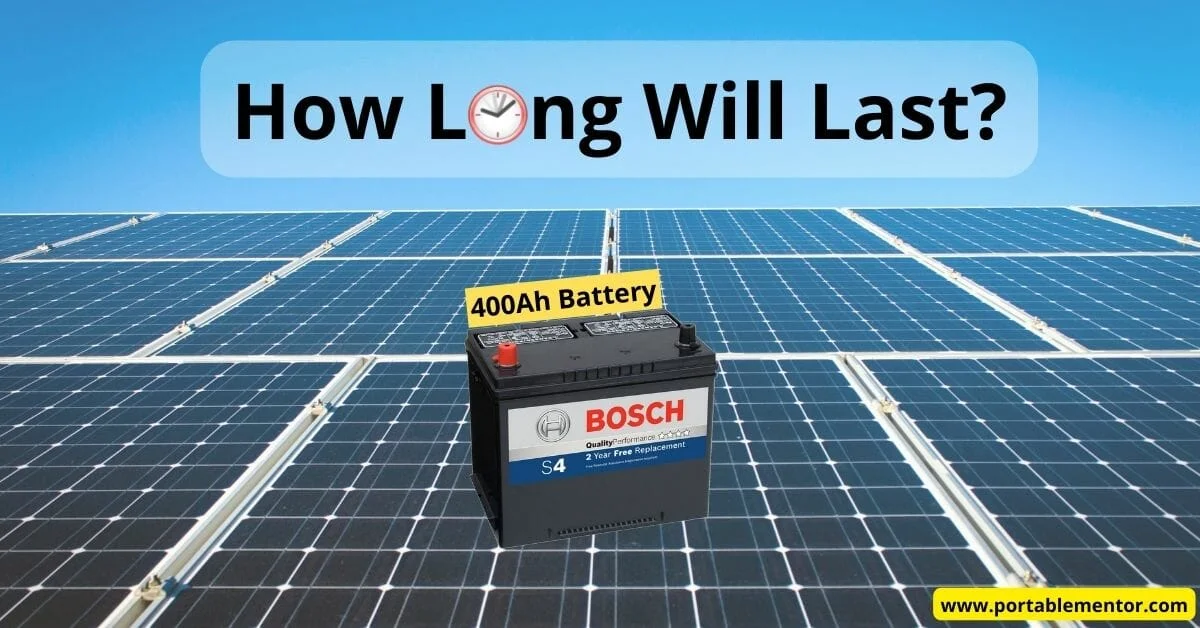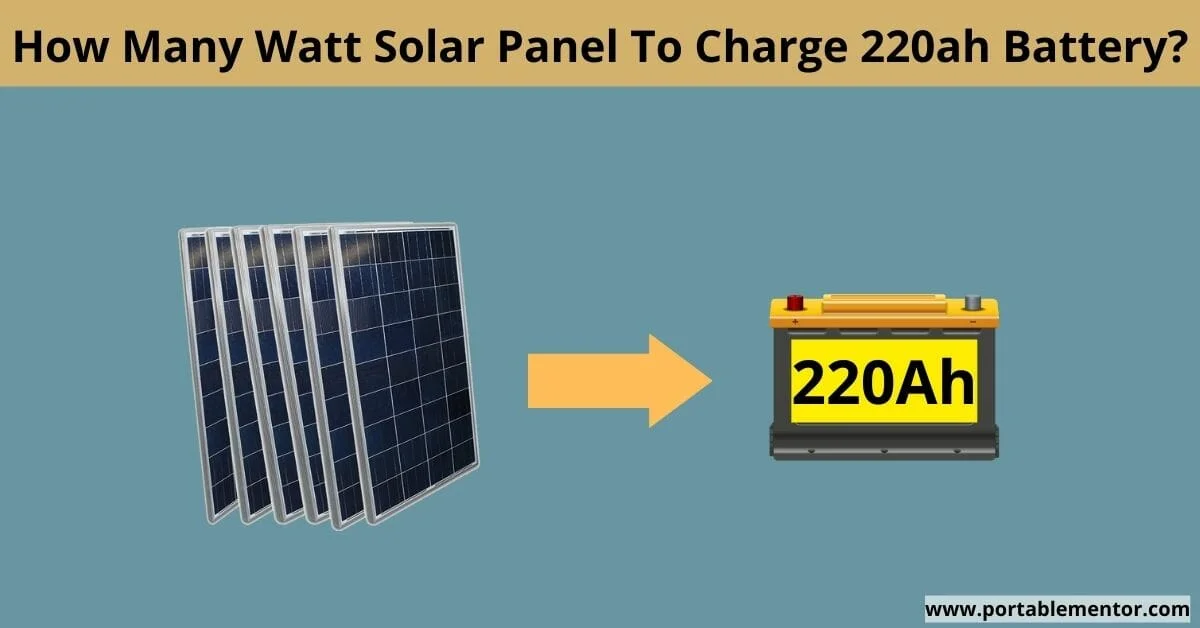The backup time or how long Will 40ah battery last on load is determined by:
- Battery type
- Battery's depth of discharge (DoD) limit
- Amount of AC or DC output load it bears
This article will give you a comprehensive view of the backup time you can expect from your 40Ah battery while powering AC or DC appliances, supported by examples.
How long will 40ah battery last?
Generally, a 40Ah lithium battery will last about 4 hours running a 100W AC output load, and a 100 DC watt appliance for about 4 hours and 40 minutes.
Easy solution --- Use our battery runtime calculator to quickly find out the 40ah battery runtime on load.
What does 40Ah mean on a battery?
The first step towards understanding your battery's potential is converting the Ah (Ampere-hours) into watt-hours (Wh). This conversion can be achieved using the formula:
Battery capacity in Wh = Battery Ah x Battery Volts.
The majority of 40Ah batteries have a voltage of 12V. Hence, the calculations for this guide will revolve around a 12V battery.
40Ah battery capacity in watt-hours = 40 x 12 = 480Wh
This implies that a 12V 40Ah battery has a capacity of 480 watts. Can you then run a 10-watt appliance for 48 hours? The answer, intriguingly, isn't a simple 'yes' or 'no', but rather depends on a variety of factors.
40ah Lead-acid versus Lithium Battery Backup Time
Every battery type comes with its DOD limit, indicating the power percentage that can be drawn from it without harming the battery.
While lead-acid batteries can be discharged safely up to only 50%, lithium-ion batteries can endure a discharge of 100% without a significant impact on their lifespan.
In simple wording --- with a 12v 40Ah lead-acid battery, you can draw 20Ah or 240Wh. Conversely, a lithium battery of the same capacity will allow you to extract between 480Wh.
AC versus DC Watts & Inverter Efficiency
As batteries store Direct Current (DC), an inverter is needed to convert DC into Alternating Current (AC) for most household appliances. Inverters, however, aren't 100% efficient.
They typically operate within an efficiency range of 85-95%. For this article, we will work with a 90% efficient inverter, which is a common type.
Hence, if you're using your 40Ah battery to power an AC load through an inverter, multiply the battery's watt-hours by 0.90 (inverter's efficiency).
- 40Ah lead-acid battery with a 50% DOD limit equals 216 AC watts
- 40Ah lithium-ion battery offers 432 AC watts
Exploring the Runtime of a 40ah Battery Under Various Loads
Now, let's delve into some practical examples to understand the duration for which your 40Ah battery will last when running various appliances:
| Appliance | Wattage Required | Estimated Backup time 40Ah lead-acid battery | Estimated Backup time 40Ah lithium battery |
|---|---|---|---|
| Ceiling Fan | 90 AC watts | 2.2 hours | 4.4 hours |
| LED Lights | 20 DC watts | 12 hours | 24 hours |
| Bulb | 10 DC watts | 24 hours | 48 hours |
| Computer | 300 AC watts | 40 minutes | 1 hour & 20 min |
| Laptop | 100 DC watts | 2.4 hours | 4.8 hours |
| Phone Charger | 7 DC watts | 34 hours | 68 hours |
| DVD Player | 30 AC watts | 6.8 hours | 13.6 hours |
| Wall Fan | 60 AC watts | 3.4 hours | 6.8 hours |
| Fridge | 150 AC watts | 1.3 hours | 2.6 hours |
| Coffee Maker | 800 AC watts | 15 minutes | 30 minutes |
Note: The above calculation is made based on DC (240w for 50% Depth of Discharge & 480w for 100% Depth of Discharge) and AC (204w for 50% DOD & 408W for 100% DOD) values.
Understanding Battery Cycles and Backup Time
Each charging cycle subtly contributes to the overall lifespan of the battery, a common characteristic of rechargeable power sources.
Here are some common battery types with their life cycles.
| Battery Type | DOD% | Life cycles |
|---|---|---|
| AGM | 50% | 500 |
| Lead-acid | 50% | 500 |
| Lithium | 80-100% | 2000-1600 |
After the mentioned cycles, your battery will perform at about 80% of its original capacity.
For instance, a 40Ah lead-acid battery, after 500 cycles of 50% Depth of Discharge, will have its total capacity decreased by around 20%, resulting in a usable capacity of 192Wh.
How long does it take to charge a 40ah battery?
A 12v 40Ah battery equates to 480Wh of capacity. If you're using a lithium-ion battery with 100% DOD, you'll need 480w of solar power to recharge your battery, and 240 DC for a lead-acid battery.
Divide the solar DC watts required for recharging by the sunlight hours in your area.
Let's take Florida as an example, with its average of 5 hours of solar sunlight.
This equates to requiring a 115-watt solar panel (480 ÷ 5 + 20%) for a lithium battery and a 57-watt solar panel (240 ÷ 5 + 20%) for a lead-acid battery.
In ideal sunlight conditions, you can fully charge a 40Ah lithium battery in 5 hours with a 120W solar panel, and a lead-acid battery in 2.5 hours or in 5 hours with a 60W solar panel.
Related post: Battery charge time calculator using solar panels
Which inverter is suitable for 40Ah battery?
The capacity of the inverter you need depends on the total output load. Whether you require a 1000W inverter or a 100W inverter will be determined by the cumulative AC output load you need to support.
As a safety measure, add an extra 20% to the total output AC when sizing the inverter for your battery. This extra amount accommodates inverter efficiency and keeps your system safe.
Here are some of my recommendations for solar inverters with 40ah battery.
| Inverter size | Details | Where to buy |
|---|---|---|
Cobra POWER 500W Power Inverter | - 2 Fast Charge USB Ports - 2 Grounded AC Outlets - 1000W surge capacity - Remote Controller | Check Lates Price |
Renogy 700W Pure Sine Wave Inverter | - 2 Grounded AC Outlets - 1400W surge capacity -Remote Controller - 1 USB Port | Check Lates Price |
Renogy 1000W Pure Sine Wave Inverter | - 2 Grounded AC Outlets - 2000W surge capacity -Remote Controller - 1 USB Port | Check Lates Price |
Keep reading...
- Solar Panel Size Calculator – Charge Your Battery In Desired Hours
- Battery Charge And Discharge Rate Calculator
I hope this guide was helpful to you if you have any queries contact us thank you!



